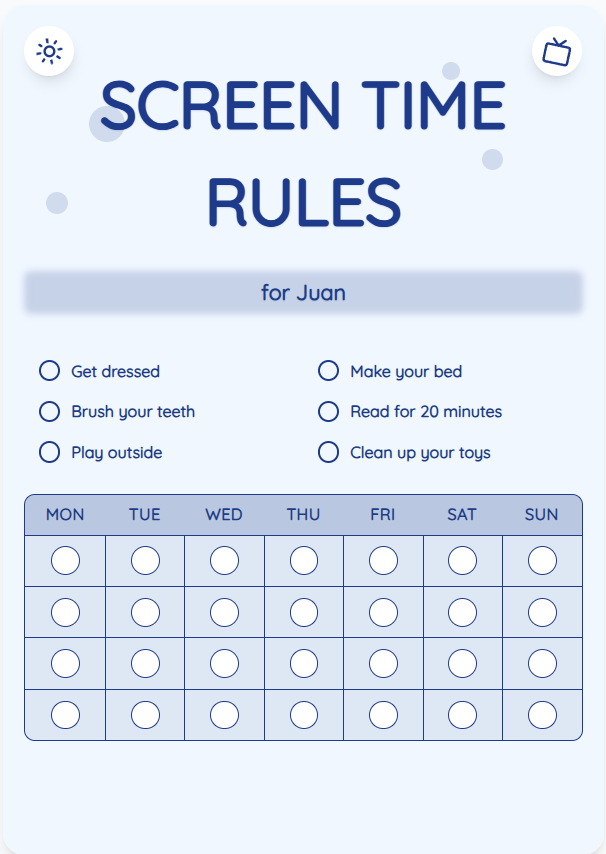Navigating Screen Time: Finding the Right Balance for Your Child
As a parent, deciding which screen time is good for your child can be challenging. In this guide, we will provide you with actionable advice and practical tips to help you establish healthy screen time habits that promote your child's development and family harmony.
See What Your Screen Time Chart Will Look Like
Here's an example of a beautiful, customizable screen time rules chart you can create for your family

Understanding Screen Time Guidelines
Before determining how much screen time is appropriate for your child, it's essential to understand the recommended guidelines. Experts suggest limiting screen time to 1 hour per day for children aged 2-5 and ensuring that screen time does not interfere with sleep, physical activity, or social interactions.
Creating a Screen Time Routine
Establishing a consistent screen time routine can help regulate your child's technology use. Consider creating a screen time chart using tools like ScreenTimeRules.com to set clear boundaries and expectations. Allocate specific time slots for educational content, creative activities, and outdoor play to create a balanced approach.
Put These Tips Into Action
Create a custom chart to implement these strategies with your child
Engaging Alternatives to Screen Time
Encourage your child to participate in non-screen activities that promote cognitive and physical development. Set up playdates, engage in arts and crafts projects, or involve your child in household chores to reduce reliance on screens. By introducing diverse activities, you can nurture your child's creativity and social skills.
Practical Tips for Success
- Limit screen time before bedtime to promote better sleep quality
- Engage in screen time activities together to monitor content and foster bonding
- Encourage outdoor play and physical exercise as alternatives to screen time
- Establish screen-free zones in the house, such as the dining area or bedrooms
Frequently Asked Questions
How can I encourage my child to reduce screen time without conflicts?
Communicate openly with your child about the importance of balance. Involve them in setting screen time limits and offer rewards for adhering to the agreed-upon rules. Encouraging alternative activities can also make the transition smoother.
What are the signs of excessive screen time in children?
Signs of excessive screen time include irritability when screens are taken away, neglect of other activities, and declining academic performance. Monitoring your child's behavior and engagement with screens can help you identify and address these issues.
How can I use a screen time chart effectively?
A screen time chart can serve as a visual aid to help your child understand and follow screen time limits. Update the chart regularly based on your child's behavior and achievements. Be consistent in enforcing the rules outlined on the chart to establish a routine.
Finding the right balance in screen time management is key to fostering your child's holistic development. By implementing the tips and strategies discussed in this guide, you can create a healthy relationship with technology that benefits your child's well-being. Explore the use of screen time charts on ScreenTimeRules.com to simplify the process and promote family harmony.
Ready to Transform Your Family's Screen Time?
Join thousands of parents who have successfully managed screen time with our customizable charts.
